Adoption potential of two agroforestry interventions: improved fallows and domestication of
indigenous fruit trees in the humid forest and savannah zone of Cameroon
ir. Ann Degrande
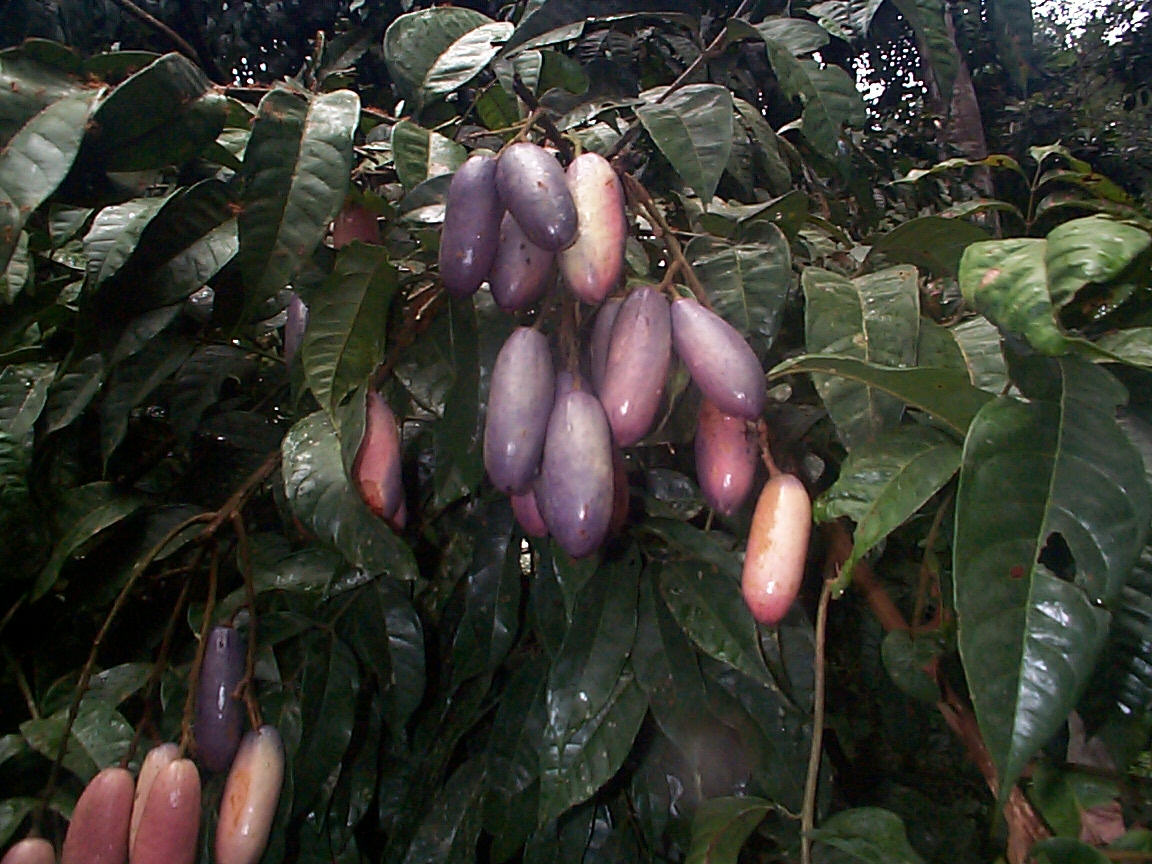
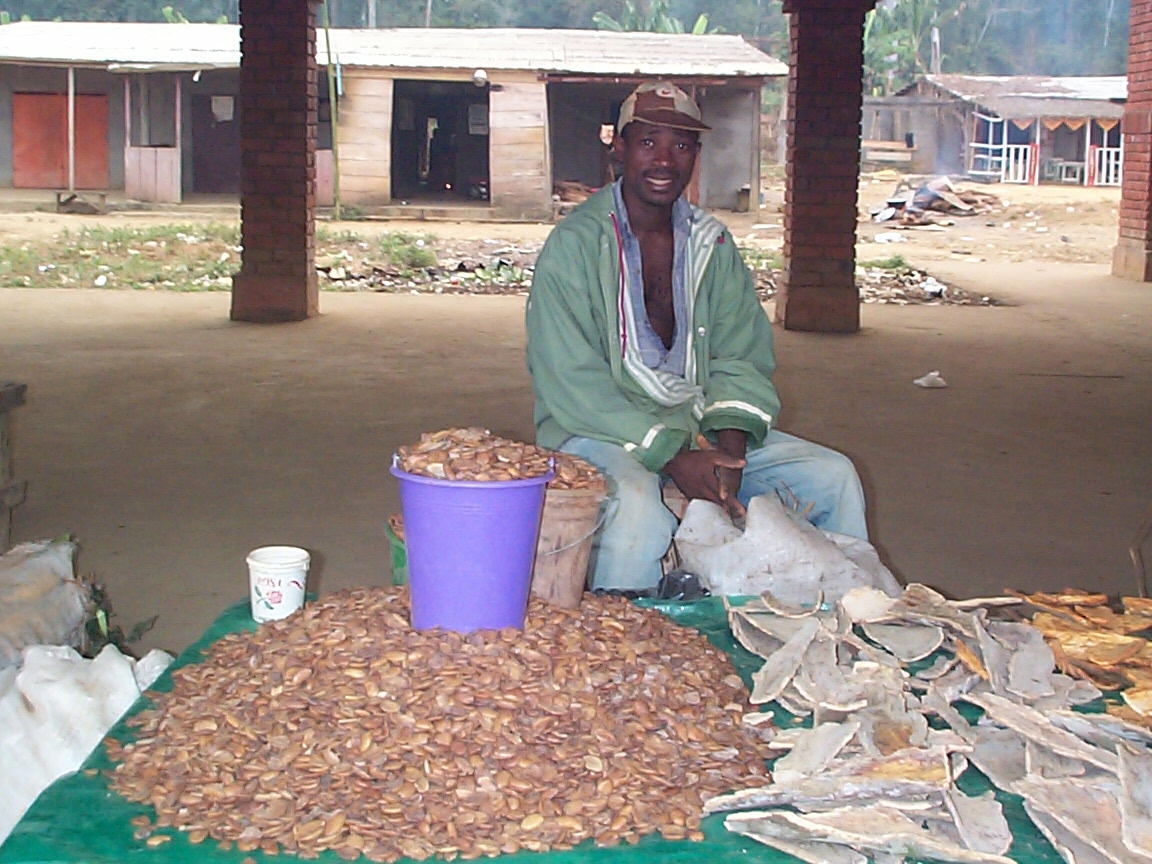
|
Safou (Dacryodes edulis) fruits are very nutritious with a high protein and lipid content
|
Dika nut (Irvingia gabonensis) is very common in rural and urban markets of Cameroon, Gabon and Nigeria
|
Inhoudstafel
- Background
- Objectives
- Methodology
Background
The forests of West and Central Africa, rich in flora and fauna, are degrading rapidly due to timber exploitation and devastating slash and burn agriculture from farmers in search of new farm land to respond to ever increasing population. In 1996, more than 50.5% of the Cameroonian population was living below the poverty line. This percentage was higher in rural areas (56.7%). The increasing poverty was further exacerbated in the ’90 by the devaluation of the CFA franc and slumping coffee and cocoa prices in the world market, until then major income generators for farmers in the region. Nowadays, there is growing consensus among researchers and policy makers that poverty alleviation in the tropics can only be achieved through increases in agricultural production using soil fertility improving technologies, in addition to increased and diversified income for rural households.
Since 1987 the “International Centre for Research in Agroforestry” in the tropical lowlands of West and Central Africa is looking for agroforestry technologies aimed at reducing deforestation and soil depletion and alleviating poverty. Until 1998 the research was oriented towards the development of improved fallow management as an alternative to the traditional slash and burn system. The techniques that were tested and evaluated with farmers included planting of fast-growing and N-fixing trees and shrubs that replenish soil fertility quicker than the natural vegetation. In 1999, ICRAF reoriented its research towards the domestication of indigenous fruit and medicinal trees. The main objective of this research programme is to increase, stabilise and diversify farmers’ income and to improve health care in rural areas, while safeguarding biodiversity and the environment. The research approach emphasises farmers’ active involvement in the development of the new technologies.
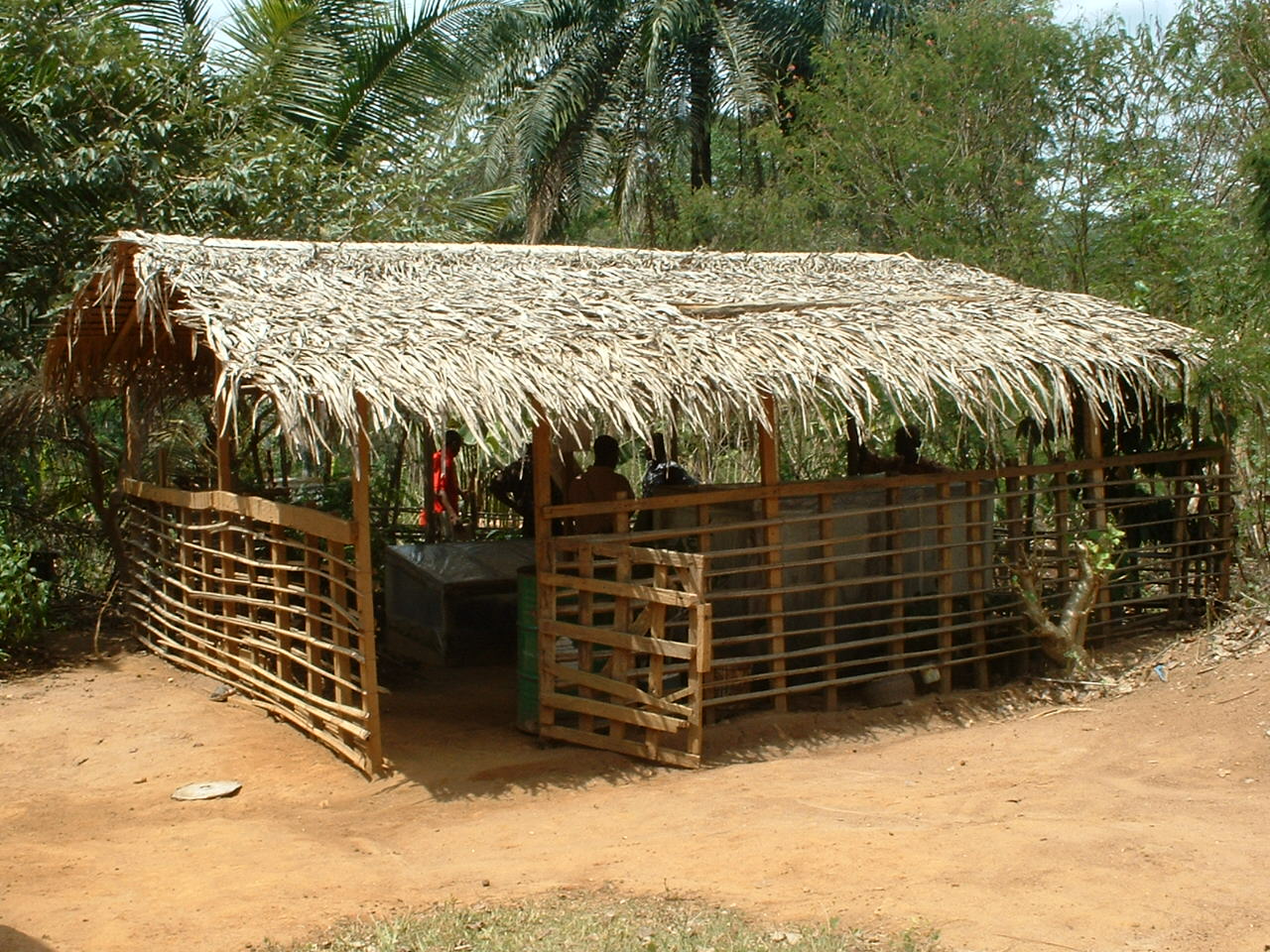
Village nursery where farmers are propagating indigenous fruit trees of their choice. Nkom Efoufoum II, Centre Province of Cameroon
Back to top
Objectives
The main objective of the study is to assess adoption potential of agroforestry technologies by farmers of the region and to suggest means to ameliorate and accelerate this adoption.
Different aspects affecting adoption of agroforestry technologies will be studied:
- Characteristics of the technologies themselves, i.e. biophysical performance and technical requirements, complexity, profitability, acceptability and users’ perception of benefits and disadvantages, relevance and compatibility.
- Decision making in rural households in relation to testing and adopting of innovations.
- Existing land-use systems and farmers’ livelihood strategies in order to determine points of intervention for the innovations.
In addition, a closer look will be given to the participatory approach of the research and development of new agroforestry technologies with an aim of improving the methodology.
Back to top
Methodology
Participatory research on improved fallows in humid forest and savannah zone of Cameroon was carried out from 1994 to 1999. Biophysical and socio-economic data were systematically collected and analysed. The following publications are already available.
- Degrande, A. & Duguma, B. (2000). Adoption potential of rotational hedgerow intercropping in the humid lowlands of Cameroon. AgREN network paper, 103, July 2000, ODI, London (UK)
- Abstract
Shifting cultivation in the humid lowlands of Cameroon has been associated with declining soil fertility resulting in low yields of food and tree crops. Agroforestry and improved fallow systems such as hedgerow intercropping can play an important role in improving sustainable production on farmers’ fields. Between 1988 and 1993 the International Centre for Research in Agroforestry Humid Lowlands of West Africa Programme (ICRAF-HULWA) in Cameroon evaluated the conventional hedgerow intercropping and, more recently (1994–8), rotational hedgerow systems. Farmer adoption has remained low. Based on continued monitoring of on-farm trials and a socioeconomic survey, three main reasons why farmers do not easily adopt the innovation were identified. Firstly, contrary to expectations, farmers indicated that land availability is not a problem and that they can acquire more land in the village if there is a need. Secondly, in the lowlands of Cameroon, soil erosion is not a major concern of farmers. Thirdly, farmers in the study zone do not feel that soil fertility is a major problem and are thus hesitant to invest in fertility management. Furthermore, farmers seem to be concerned about issues such as lack of marketing opportunities and shortage of cash to pay for health care and education, rather than the decline in soil fertility. However, recent experience with more flexible design and management of hedgerow intercropping and more targeted promotion of the technology has shown a growing interest of farmers to plant tree fallows. Consequently, further research should focus on diversification of the output of rotational hedgerow systems. The promotion of rotational hedgerow systems should target sites where farmers perceive land shortage and poor soils to be major problems.
- Degrande, A. (2001). Farmer assessment and economic evaluation of shrub fallows in the humid lowlands of Cameroon. Agroforestry Systems, 53, 11-19
- Abstract
Food crop production in highly populated areas around major cities of the humid lowlands of Cameroon is highly dependent on a fallow system (2 - 4 years duration) mainly of Chromolaena odorata. Where such fallows have been in use for some time, problems of soil fertility with declining crop yields and higher incidence of weeds were reported. Although improved fallows have been widely adopted in sub-humid zones, there is no evidence of successful adoption of agroforestry-based technologies for soil fertility improvement in the humid forest areas. In response, ICRAF has developed a short fallow system with Cajanus cajan for soil fertility improvement in the humid lowlands of West Africa. Farmers’ response to these cajanus fallows is positive. Benefits reported are higher crop yields after cajanus fallows compared to natural fallows, clearing of cajanus is easier and the shrubs shade out the weeds. Women particularly appreciate the technology for its low labour demand and for the fact that these shrubs can be planted on land with less secure tenure. Economic analysis of cajanus fallows compared to natural fallow over 6 years shows that cajanus fallows are profitable under most tested scenarios, both in terms of returns to land and to labour. It seems that improved fallows with Cajanus cajan are a good response to shortening natural fallows for households in the humid lowlands of Cameroon with land constraints. However, wider dissemination of the technology requires a targeted extension approach and adequate seed supply strategies, which should be based on joint efforts between farmers, extension services and research.
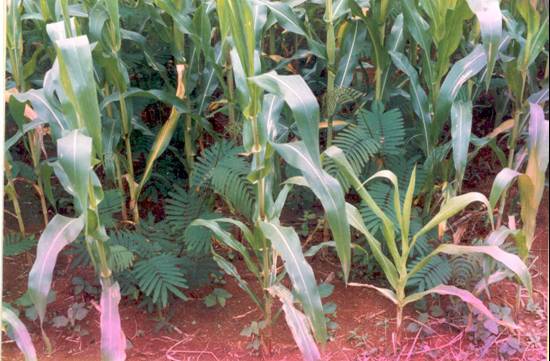
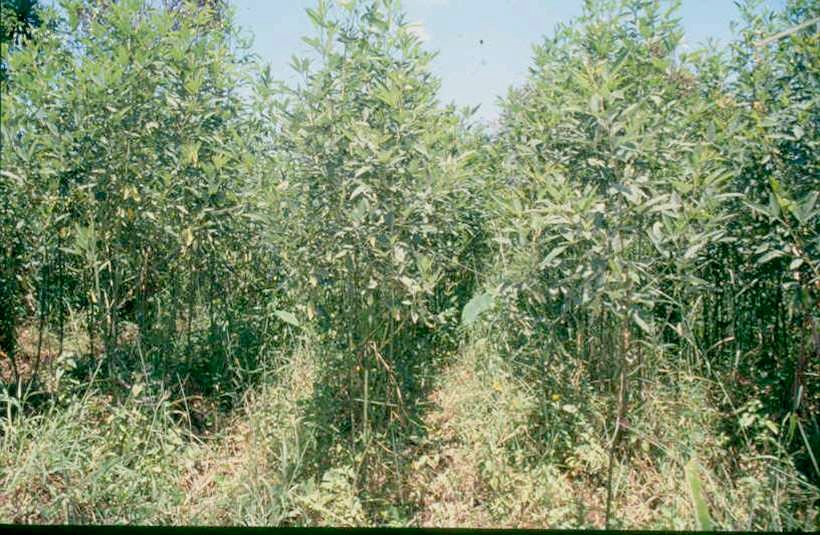
|
During establishment of Callandria calothyrsus, a N-fixing tree, maize is associated to reduce establishment costs
|
A stand of cajanus about 1 year after planting
|
- Kanmegne, J. & Degrande, A. (2002). From alley cropping to rotational fallow: Farmers’ involvement in the development of fallow management techniques in the humid forest zone of Cameroon. Agroforestry Systems, 54(2), 115-120
- Abstract
Alley cropping was introduced in the humid forest zone of Cameroon to increase soil fertility in 1987, but until 1992 the adoption rate had remained low. To better understand the reasons behind this, three types of on farm trials were established from fully researcher controlled to fully farmer controlled. During the evaluation of the technology with farmers a number of modifications were registered
- Pruning height and frequency: Because of the difficulties to consistently cut back at 50cm, farmers decided to slash at ground level as they normally do while slashing the natural fallow vegetation. This equally allowed for more flexibility in time of pruning.
- Cropping intensity and pattern: Initially, alleys were cropped each year. This however had several shortcomings. Having observed the positive impact of incidental fallow period in a farmer's field, it was decided to introduce a fallow phase of at least one year. During the fallow period the plot can be used for fodder production, bee farming and production of stakes.
- Residue management: Fire went incidentally in a farmer's tree plot after slashing, and the trees were not affected. This gave farmers an alternative way to manage the residue, by controlling the fire, before bringing in other crops such as groundnut and cassava.
- Agroforestry species: Because Leucaena leucocephala, in spite of it soil fertility restoration potential, rapidly became a noxious weed, farmers have asked for a less invasive species. Calliandra calothyrsus was introduced for this purpose and became a good bee forage.
With these modifications, the original alley cropping system has evolved into a rotational tree fallow with higher adoption potential. From about 15 farmers who were testing the technology in 1992, the number increased to 52 in 1996, 120 in 1997 and 236 in 1998.
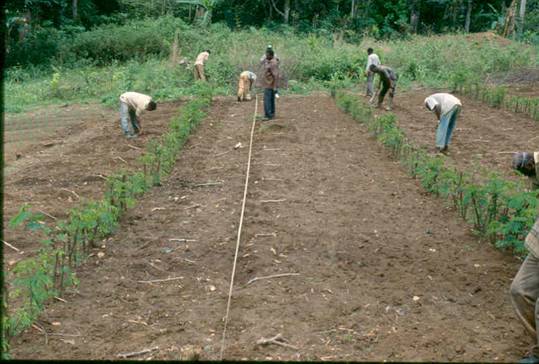
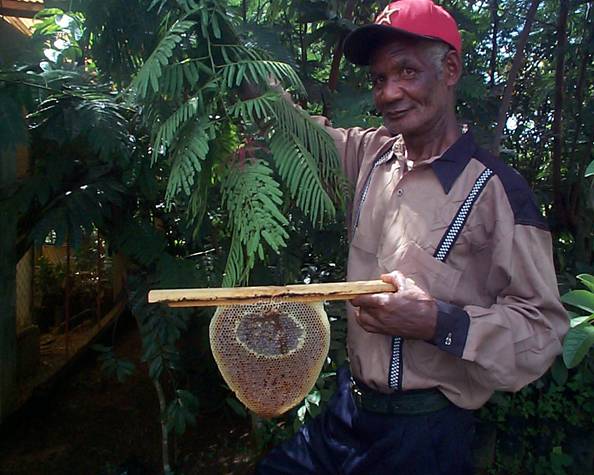
|
At the beginning of the cropping season, calliandra trees are cut back at 0.05 m food crops are planted in the alleys
|
Bee keeping during the fallow phase is one of the secondary benefits favouring adoption of tree fallows by farmers
|
Additional fieldwork will be limited to a survey on continued use and spread of improved fallows in former pilot sites.
Monitoring and evaluation of vegetative propagation techniques and the integration of improved planting material in farmers’ fields constitutes the greatest part of the fieldwork in this study. The methods that will be used are: direct observation, monitoring and evaluation forms, group and individual discussions with farmers and relevant partners, and other participatory tools such as matrix ranking and mapping. This should lead to the formulation of benefits and disadvantages of the technologies and the identification of intervention points for domestication.
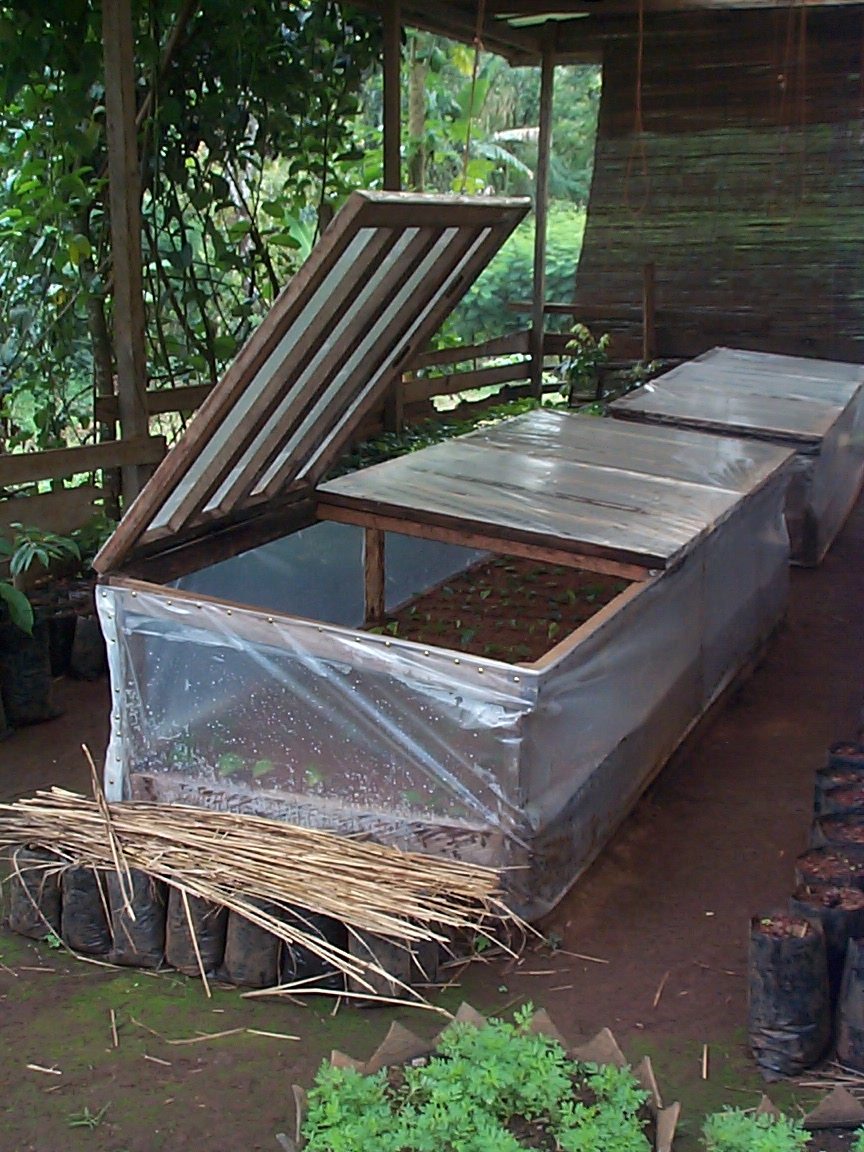
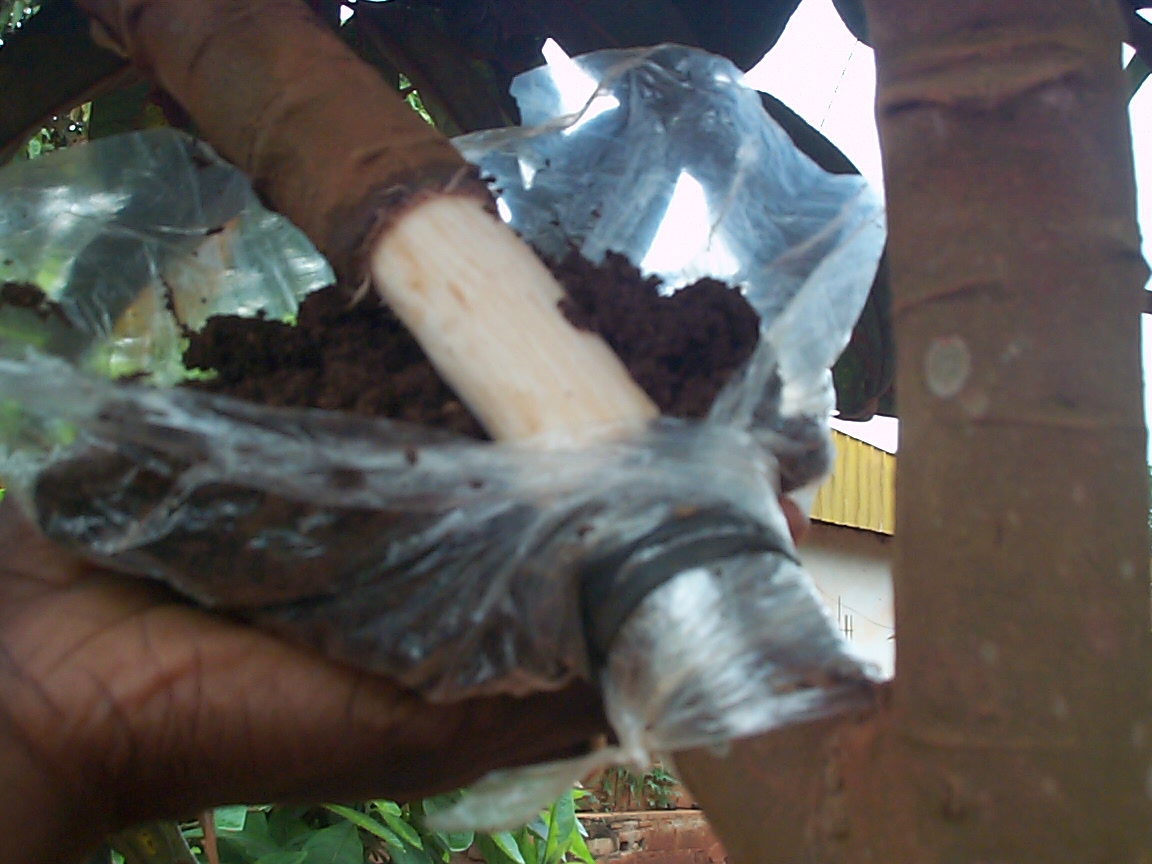
|
A non-mist propagator, used to propagate fruit trees by rooting of cuttings
|
Air layering consists of removing the bark of a branch still attached to the mother tree to stimulate its rooting
|
Economic analysis of the technologies will consist in collecting and compiling of costs and benefits. A combination of data obtained on-station and on-farm will be used.
A baseline socio-economic survey will be carried out (1) in all pilot villages and (2) with all experimenting farmers in order to gain understanding of:
- geographical location; relevant historical and cultural factors; road, education and health infrastructure; access to markets; availability of tree products; tree diversity; presence of extension services and prevalence of groups and associations, etc.
- age, education, matrimonial status, farming systems, farm area, income and expenditure profile, wealth level
Back to top









